Topic # 3- Teeth whitening - Benefit Vs Risk
Hello my dear readers, I am very grateful that you take the time to learn a little more about your oral health, I have decided to take an initiative which I called "online dentist"; in favor of creating the correct awareness and dental education for the steemit community. I'm going to give you an informative topic about your teeth weekly, so everyone will have a chance to catch up on the topic of the week and we will have the opportunity to discuss this topic, clarify any questions or simply stay informed, you can take the initiative with me and if you have a dental topic that you want to know a little more just let me know and I'll prepare a post for you.
The online dentist issues so far published can read them here:
Orthodontics, ¿health or business? Common problem among patients
"Teeth whitening"
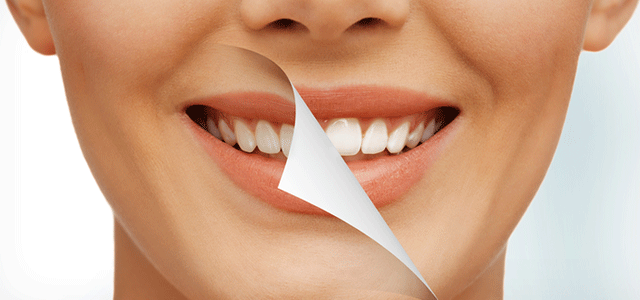
Source Today we are going to add a topic that I find very interesting, since currently there is a great demand from patients for aesthetic treatments "The aesthetic can be defined as everything that is pleasing to our senses, is personal, it varies according to the time and region in which people live and is applicable to nature, art and the human body, to its parts or as a whole". Nowadays, an aligned smile and white teeth are undoubtedly on the wish list of most patients; which do not take into account the consequences to which they may be subjected, only are interested in the satisfaction of having a "white" smile.
Tooth whitening is a technique based on the chemical process of oxide-reduction that seeks the clearance of pigmentations of the surface of the tooth enamel. (That is to say: it improves the appearance by clearing our teeth so that they look more white).
Tooth whitening is a product that is constantly being launched through the visual communication media, this bombardment has brought about the appearance of certain products that are available in the market and that are used by the consumer without any control on the part of the Dentist; which is very bad, because using a product without the specialist's guidance can never end well. Because of this I have decided to make a small list of the benefits and risks that are taken at the time of tooth whitening.
There are teeth whitening techniques for vital and non-vital teeth; These techniques have been modified over the years eliminating the adverse effects and ensuring greater comfort for the patient.
With this post my intention is not to sell them a commercial house or tell them if they should or should not get a teeth whitening, I want them to understand the benefit and the risk they take at the time of submitting to this treatment, which in my opinion is sometimes taken very lightly on the part of the patient. Also like any other dental treatment your teeth must comply with a series of requirements, such as: yellow or dark teeth, vital teeth post-trauma (Teeth hit with dark coloration), stains from tobacco smoke and black beverages, etc.
The products that are generally used to whiten teeth are hydrogen peroxide and carbamide peroxide. Both are presented in the form of a gel in a syringe, and act by producing the oxidation of dissolved organic debris and present in the enamel and dentin, promoting the change of color of the tooth.
The patient must be aware that each one responds in a different way to the different whitening techniques. Some may respond positively to the whitening carried out when using toothpastes, while other people do not achieve the desired tone and end up requiring porcelain veneers in order to achieve the smiles they have always wanted.
Benefits of teeth whitening
The main benefit is the personal satisfaction of having a whiter dentition that allows the patient to feel comfortable and pleasant with his smile.
However, the psychological factor is not the only benefit since numerous studies have shown the effects of carbamide peroxide as an oral antiseptic and its action in plaque reduction and wound healing, without reporting side effects. Bóveda (1991).
Risks of teeth whitening
Longevity and associated factors
The success of whitening in both vital and non-vital teeth is unpredictable, since the longevity of the results can not be 100% guaranteed by the dentist. Howell (1981) found in an in vivo study that 50% of bleached teeth showed color regression after one year of treatment. Fasanaro (1992) established that the treatment should be repeated every two years. On the other hand, Albers (1991) reported a longevity of one to three years for internal bleaching with hydrogen peroxide and sodium perborate.
Regarding treatment in non-vital teeth, it has been recommended that all teeth receiving intracoronal whitening should be controlled for approximately seven years, both clinically and radiographically; If an inflammatory cervical response is diagnosed, calcium hydroxide therapy should be performed immediately. It should be noted that the success of the treatment is influenced by the cause that produced the change in coloration; When the discoloration has been caused by restorative materials containing silver and / or zinc oxide eugenol in its composition, the prognosis is reserved. Unlike this, if the origin is necrosis or pulpal hemorrhage, there is usually a better response to whitening. In addition, the younger the tooth, the whitening is easier due to the dentin permeability characteristic of these teeth. Another aspect that must be taken into account, is the time that has elapsed since the tooth darkened, since the more recent the discoloration has been, the more effective and faster the whitening will be achieved.
Cervical resorption, inflammation in young teeth and periodontal tissues
Due to the larger diameter of the dentine tubules of young teeth, the whitening solution facilitates the passage through these to the periodontal tissues and thus stimulates inflammatory bone resorption. Kehoe (1987) showed that bleaching (sodium perborate and hydrogen peroxide combined, using the thermocatalytic method) performed inferior to the cement-enamel junction produces pH changes in the cervical surface of the canal, which could contribute to inflammation and External resorption of the tooth canal. Because of this Montgomery (1984), suggested the placement of a base thus leaving the duct filling to a more coronal level, so that the effect of the bleaching agents is restricted to the pulp chamber. This occurs because the dentinal tubules are more coronal on the outside of the root than at the origin of the root canal. Madison and Walton (1990) studied cervical root resorption as a consequence of whitening in endodontically treated teeth, and determined that the cause of bone resorption is associated with the application of heat and 30% hydrogen peroxide.
Therefore, as a preventive measure, prior to whitening, it is recommended to place a base, approximately two millimeters thick, composed of a thin layer of calcium hydroxide protected from a layer of ionomeric glass type I, in this way the penetration of the bleaching agent to the dentinal tubules of that zone, since it apparently obstructs the orifices of the tubules; previously, the duct must have been unsealed slightly below the amelo-cementary limit. The base should be placed slightly coronal to the cement - enamel joint, to ensure that the hydrogen peroxide does not penetrate the root proximally of said union.
Sensitivity in soft tissues
The gingival sensitivity must be related to the response of the patient to the concentration of the peroxide solution, in addition, if proper precautions are not taken when heat is applied in the treatment of non-vital teeth, thermal burns, chemical burns or a significant damage of the soft tissues.
Clinically, tissue problems have not been reported frequently soft, however, there may be an irritation of the gum or mucosa during the initial phase of treatment. To reduce this irritation it is suggested to reduce the time of exposure to the bleaching agent, if the problem persists, the treatment should be suspended for one or two days while improving the gingival condition.
When whitening is performed on vital teeth with the use of the night protector, the perfect adaptation of this to the gingival margins must be ensured; if whitening is performed in the office, using high concentrations of hydrogen peroxide, a good absolute isolation should be carried out accompanied by the use of a soft tissue insulator, which It is placed below the rubber dam and prevents the contact of the bleaching agent with the gingival tissues.
Post-operative tooth sensitivity
Dental sensitivity seems to be related to the passage of hydrogen peroxide through enamel and dentin, which produces a slight pulpal irritation (Feinman, 1995), for this reason, treatment is contraindicated in patients with uncontrolled dental hypersensitivity.
The patient usually reports having sensitivity for a week after the whitening has been performed. The tooth sensitivity is significantly higher when carbamide solutions are used at 15% or more, which are effective in the short term (Haywood, 1997).
The most common side effect that occurs during the whitening of vital teeth with the use of night splints is the dental sensitivity to changes in temperature, which occurs more frequently in the first hour after removing the protector or during First phases of the treatment, this is attributed to the nature of freedom of diffusion of the material, rather than to the low pH of the solution (Croll, Cavanaugh, 1986, cited by Bóveda, 1991). In fact, the effects caused on the pulp by long-term treatment with carbamide peroxide are still unknown. On the other hand, dozens of years of practice in the office using 35% hydrogen peroxide solutions with heat or light, have never caused pulpal necrosis except when the tooth is overheated or traumatized (Goldstein - 1987; Zach, Cohen, 1965; cited by Bóveda, 1991).
Effect on the restorative tooth-material seal
The bleaching of non-vital teeth is usually followed by an aesthetic restoration. One of the fundamental requirements is that aesthetic restoration prevents marginal microfiltration.
Barkhordar et al. (1998) They did a study where their results corroborate those of other published studies in which it has been observed that whitening has harmful effects on the tooth-restoration interface. Therefore, they recommend the placement of the aesthetic restoration indicated two days after the whitening has been completed in order to minimize the effect of the bleaching agent on the adhesive properties of said restoration.
However, it is considered safer to perform the necessary aesthetic restorations, seven days after the whitening is finished.Other aspects to consider
- Dentists should be cautious when using the 35% hydrogen peroxide solution, since they and the patient can be burned.
- Whitening is limited when the patient reports having allergic manifestations in relation to the bleaching solution or the material making the tray, such as: burning sensation, dry throat, nausea, irritation or edema.
- Goldstein (1996), recommends determining the sensitivity and translucency of the teeth before treatment, since the highly translucent teeth do not whiten well, sometimes appearing more gray.
- When there is the presence of restorations of resin, crown or other aesthetic material, they may need to be changed for reasons of color modification that is caused on the tooth surface. There may be superficial removal of extrinsic pigments from or around a present restoration. However, the current intrinsic color of the composite resin does not appear to be significantly altered by any of the bleaching solutions (Bóveda, 1991).
To be able to perform whitening at home, your dentist takes an impression of your teeth, which once emptied into plaster will result in a perfect model of your mouth. From that model a specific splint will be taken for your teeth. Then we proceed to try in the mouth to prevent the laceration of some tissues and should be lowered if necessary.
The instructions of the material will be delivered according to the commercial house with which you work. This method should not be done without the supervision of your dentist.
I hope that today's topic has been useful for you Until next week we continue to support @steemstem to create health content.

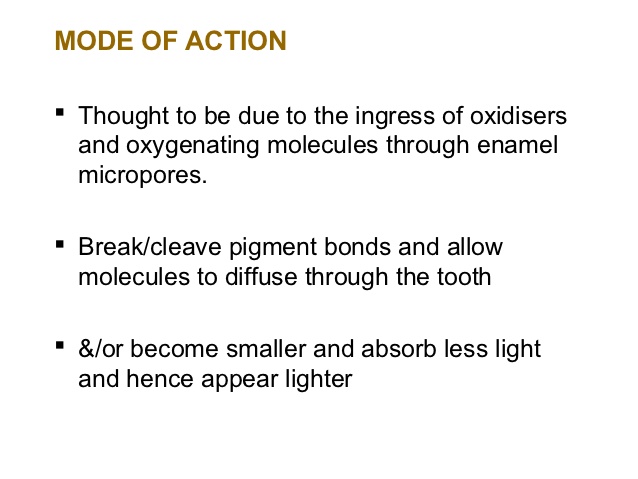
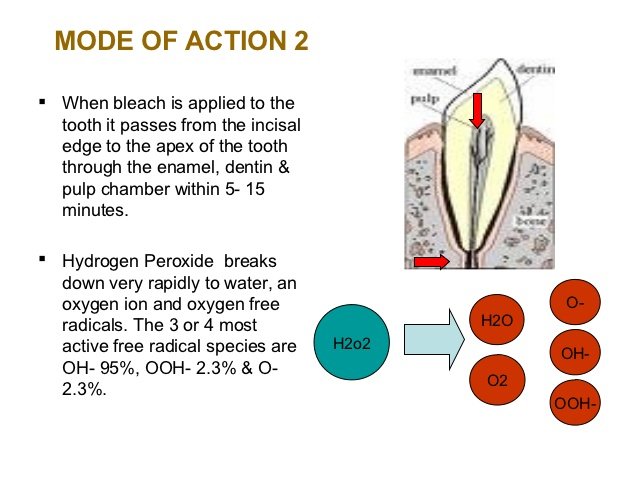
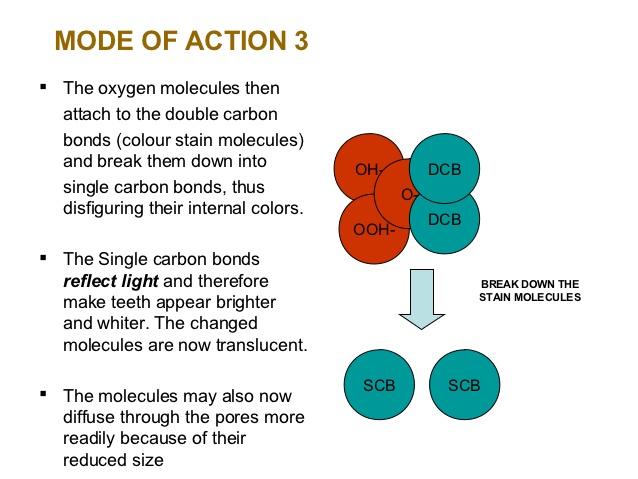
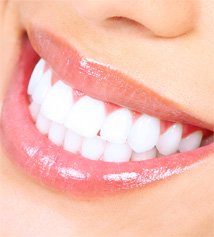

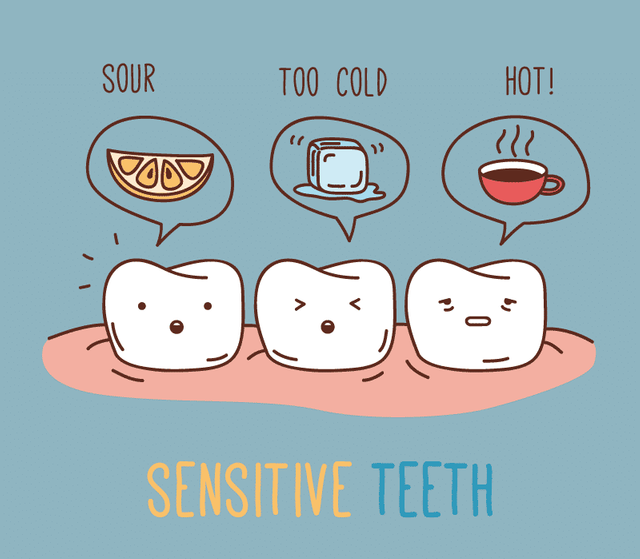
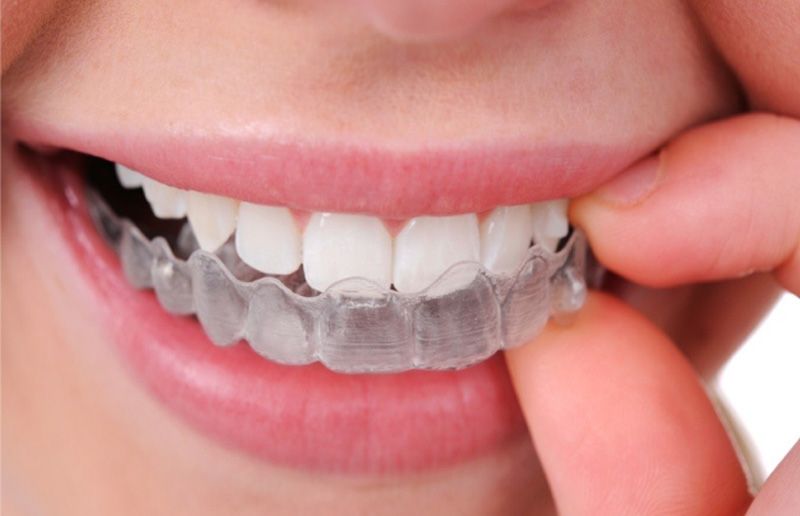
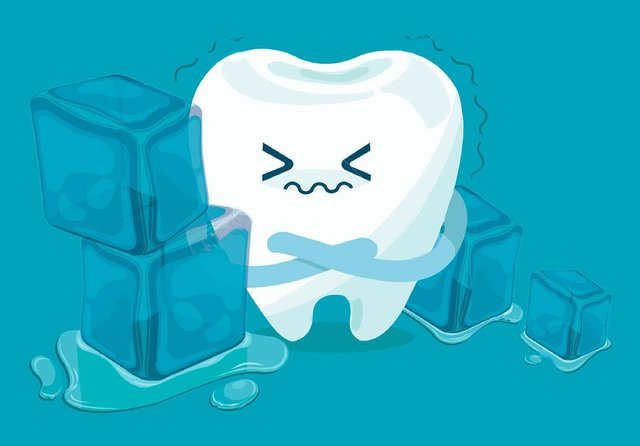
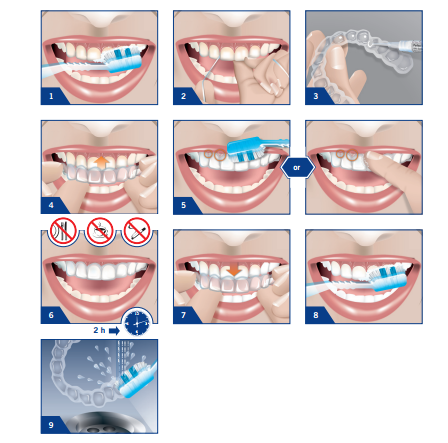
This post has received a 25.61% upvote from @lovejuice thanks to @jennifer.jimenez. They love you, so does Aggroed. Please be sure to vote for Witnesses at https://steemit.com/~witnesses.